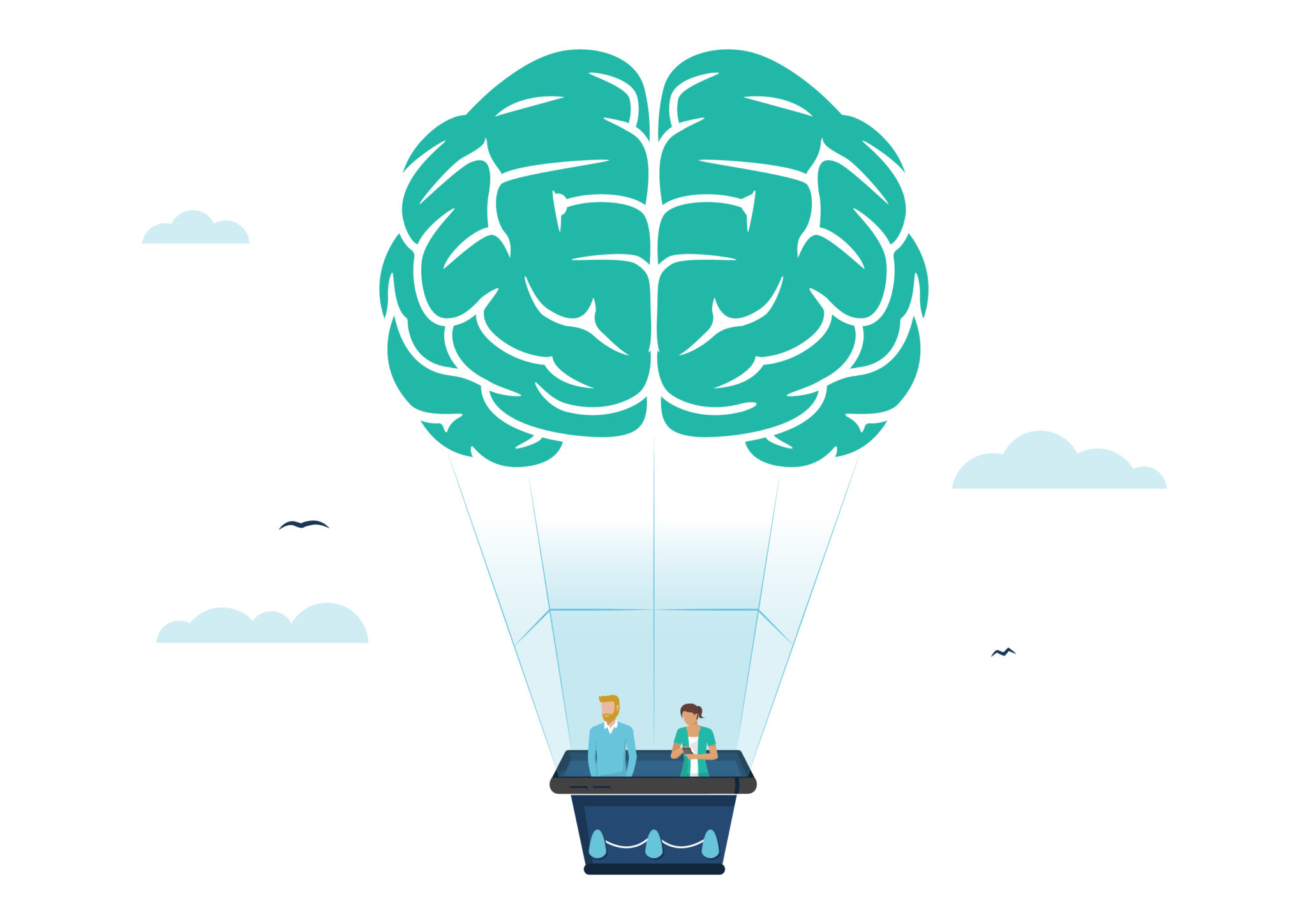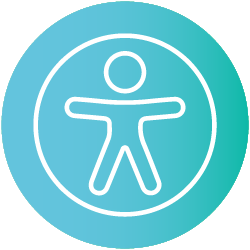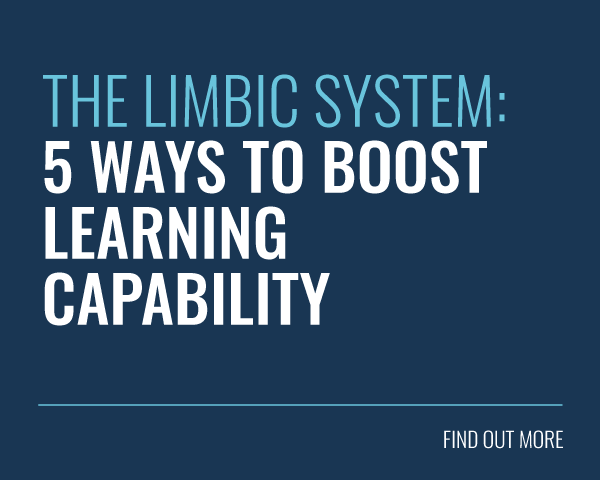
Endorphins, often associated with pleasure and pain relief, play a surprising role in the learning process.
In fact, these powerful neurotransmitters influence how our brains form and retain memories, impacting everything from classroom performance to skill acquisition.
It turns out those feel-good endorphins aren’t just for runners’ highs. They can also turn you into a learning powerhouse.
Join us as we explore the science behind endorphins and discover how harnessing their power can revolutionise your learning experience. But first, let’s go back to basics.
What Are Endorphins?
Endorphins are neurotransmitters that pass messages from one neuron to another. They are created in your pituitary gland and hypothalamus, both of which are located in your brain. These hormones are essential for orchestrating the intricate functions of your central nervous system.
The name of the hormone comes from the words ‘endogenous’, which translates to ‘within the body’, and ‘morphine’, an opiate pain reliever. Put together, the name helps to explain the main purpose of endorphins.
These remarkable molecules are released in response to pain, stress, or pleasurable activities. They bind to opioid receptors in your brain, reducing the perception of pain and triggering feelings of euphoria, well-being, and relaxation.
There are over 20 different types of endorphins in your body. Beta-endorphins are the endorphins most often linked to our body’s natural pain-relieving and stress-busting mechanisms. In fact, beta-endorphins have a stronger effect on your body than morphine.
Function and Purpose

When you feel pain, nerves in your body send signals to your brain. Your brain then releases endorphins to block the nerve cells that receive the pain signals. This helps to relieve your discomfort or improve your mood.
In fact, when endorphins engage with brain cells, they trigger a short-lived euphoric sensation that can effectively mask pain. If you’ve ever felt a runner’s high, you’ll know what we’re talking about. With this in mind, let’s break down the role of endorphins in your brain:
- Pain Relief: Endorphins act as the body’s natural painkillers, reducing the perception of pain.
- Mood Enhancement: These hormones contribute to feelings of pleasure, euphoria, and happiness.
- Stress Reduction: They help to alleviate stress and anxiety by promoting relaxation.
In other words, endorphins play a variety of roles, all focused around our well-being. This stunning clip shows an endorphin being carried along an active filament into the inner part of the brain’s parietal cortex. Even the process looks mood-boosting:
The Effects of Low Endorphins
As we’ve seen, endorphins act as our body’s natural defense system, alleviating pain, combating mental health challenges like depression and anxiety, bolstering immunity, regulating appetite, and even boosting self-esteem.
On the other hand, low endorphin levels can have significant negative consequences for overall health and well-being. If your body doesn’t produce enough of the hormone, you may be at an increased risk of developing certain conditions or symptoms. These include, for example:
- Increased aches and pains
- Stronger symptoms of depression
- Heightened anxiety
- Increased mood swings
- Problems with sleeping
- Impulsivity
Endorphins vs Dopamine

Endorphins are often mistakenly linked to dopamine, another crucial hormone that contributes to our happiness and overall function. However, these two chemicals have distinct roles and operate differently within the body.
Whereas endorphins help you to cope with pain and stress, dopamine is a hormone that boosts your mood and motivation. It’s involved in the reward circuit in your brain.
Interestingly, endorphins and dopamine are interconnected. When endorphins bind to the brain’s opioid receptors — part of the reward system — they trigger the release of dopamine. In fact, elevated endorphin levels can stimulate overall dopamine production.
Endorphins affect your in-the-moment feelings, while dopamine is more linked to the anticipation of reward and the subsequent satisfaction. Endorphins are released rapidly during specific activities, whereas dopamine release is more gradual.
For instance, the motivation to train for a marathon might be driven by dopamine-based reward anticipation, but the euphoria experienced during the race itself is largely attributed to endorphin release.
Endorphins and Learning
Neurochemistry suggests that the learning process is modulated by many endogenous substances. In other words, feel-good hormones, like endorphins, contribute to learning.
Our mind and body have a strong connection. This explains why endorphins are typically triggered by physical activity. As such, nurturing both your physical and mental health is essential for optimal well-being.
Here’s how endorphins support a good learning process:
- Improved Focus: Endorphins contribute to a positive emotional state, reducing stress and anxiety, which can be obstacles to effective learning. In turn, a calm and focused mind is better equipped to absorb information.
- Enhanced Memory: Research suggests a link between endorphin levels and improved memory function. By creating a positive learning environment, endorphins can aid in knowledge retention.
- Increased Motivation: Endorphins make us feel good and feeling good can boost motivation. This makes the associated learning process more enjoyable and engaging.
- Reduced Discomfort: If we’re in physical discomfort, we may be too distracted to learn effectively. Thankfully, endorphins’ pain-relieving properties can help to foster a more comfortable learning environment.
Feel good, learn better. In fact, studies suggest that students with positive feelings achieve overwhelmingly better grades. What’s more, did you know that employees are 12% more productive when they’re happy?
But how can you boost those endorphin levels? Let’s explore activities that trigger the release of the feel-good hormone in question.
How to Increase Endorphin Levels to Support Learning
Even though endorphins are sometimes produced as a response to negative stimuli, like fear, pain or stress, there are numerous other ways to encourage their release. You’ll be happy to learn that none of them require standing on a rake or jumping out of a plane.
Let’s have a look at a few of them now.
1. Exercise

We’ve previously mentioned the concept of a runner’s high. This is when your body releases a cocktail of endorphins and other chemicals after you push yourself physically.
But don’t be fooled by the name. You can reach this state of natural euphoria through other forms of exercise, especially cardiovascular activities. These include:
- Walking
- Running
- Dancing
- Swimming
- Cycling
- Water aerobics
And many other approaches. Exercise like this has been shown to ease symptoms of mental health conditions, like depression and anxiety. In addition, further investigations have demonstrated that working out in a group can improve mental health by 13%.
With this in mind, try to exercise regularly to maintain healthy brain activity. Similarly, short 20-30 minute workouts can boost your endorphin levels, preparing you for your study session.
2. Eat Dark Chocolate

Chocolate lovers everywhere know the irresistible pull of that final bite. But what is it about this sweet treat that leaves us craving more? It’s simple. Eating chocolate boosts your endorphin levels, along with other feel good hormones.
While all cocoa beans release endorphins, dark chocolate has the highest cocoa bean content. The more cocoa in your chocolate, the more endorphins your brain releases into your system.
Dark chocolate is also rich in polyphenolic compounds, like flavonoids. Cocoa polyphenols are antioxidants and perform anti-inflammatory activities. This also helps to enhance your emotional well-being by optimising limbic system function.
To harness the potential mood-boosting effects of chocolate before a study session, consider indulging in a small portion of dark chocolate with at least 70% cocoa content. Remember, moderation is key.
3. Listen to Music

Contrary to popular belief, listening to Mozart does not make you smarter. With that said, listening to or creating music goes beyond entertainment. When you listen to music that you love, the reward centre of the brain lights up. In turn, you release feel good chemicals like endorphins and dopamine.
This is the exact reason why music therapy is becoming a popular and effective approach in many medical settings. As such, try listening to your favourite music to put yourself in a positive frame of mind before you settle down to learn.
A Stanford study has even found that ‘music moves the brain to pay attention’. In other words, it can make you more focused, so your time spent learning is more effective. Just make sure your music choice doesn’t distract from the work at hand.
4. Laugh

We’ve all heard the saying, ‘laughter is the best medicine’. But it turns out this old adage is backed by solid scientific research.
Laughing releases endorphins and other previously mentioned feel-good chemicals. In addition, laughter is an excellent way to suppress stress hormones, like cortisol. This helps you to improve your mood, reduce stress, lower blood pressure, and support a stronger immune system.
With this in mind, it only makes sense to try and have some fun whilst learning. One way to do this is to gamify your studies. For instance, you could create quizzes, flashcards, or even board games based on the subject. Studying with friends also turns learning into a collaborative and fun experience.
5. Volunteer

The Department of Psychology at Carnegie Mellon University studied volunteerism and hypertension. They found that those who volunteered four hours of their time per week were less likely to develop this particular condition.
In fact, volunteering and generosity trigger neurotransmitters, releasing endorphins. It’s like your brain is wired to reward kindness.
With this in mind, try incorporating volunteering or acts of altruism into your daily life. For example, helping your local charity shop or supporting sporting events is a surefire way to get those endorphin levels up.
You will notice your overall mood improve as your endorphin levels get a consistent boost. This, in turn, will lead to the optimal conditions for learning. What’s more, volunteering itself often involves learning new skills, problem-solving, and adapting to new situations.
6. Meditate

Meditation is the practice of training your awareness. It helps the meditator become more mindful and present. By this stage, you might have guessed that meditation can also trigger the release of endorphins (alongside dopamine, serotonin, and melatonin).
This chemical cocktail leaves you feeling calmer, happier, and more content. If you are new to meditation, try the steps Mindful suggests:
- Find a calming and quiet place to sit
- Consider lighting a candle or adding soothing music
- Set a time limit, like 5 or 10 minutes
- Focus on your breathing – take slow, deep, and conscious breaths
- Notice when your mind starts wandering and return your attention to your breathing
- When you are ready, take notice of your environment
7. Get a Massage or Try Acupuncture

A good massage helps you to relax, both physically and mentally. While the physical benefits of loosened muscles and improved circulation are often immediate, the mental advantages are equally significant.
Massages stimulate the release of endorphins, while simultaneously reducing cortisol, the stress hormone. This hormonal balance promotes feelings of happiness, reduces stress, and even bolsters your immune system.
Similarly, acupuncture, a traditional Chinese medicine, is an effective treatment for pain and other disorders. Acupuncture involves inserting tiny needles into the skin in order to stimulate the central nervous system.
This leads to the release of many chemicals, including endorphins. In fact, research suggests that your endorphin levels increase for up to 24 hours following an acupuncture session. As such, incorporating acupuncture or massage into your life can have a positive impact on your ability to learn effectively.
8. Eat Spicy Food

Spice lovers rejoice! The fiery sensation of spicy food tricks your brain into thinking that you have hurt yourself. Your brain, believing you’re under attack, releases endorphins. The result is a surprising surge of pleasure and satisfaction.
It’s a fascinating example of our brains rewarding us for enduring a seemingly unpleasant sensation with a rush of euphoria.
However, it’s important to remember that excessive spice consumption can have harmful consequences. Chasing that extreme endorphin high by consuming the world’s hottest chili is unnecessary. As we’ve seen, there are plenty of other ways to boost your mood and well-being.
9. Repeat Affirmations

Affirmations were once dismissed as mere self-help clichés. However, the escalating pressures of modern life have prompted a renewed interest in the power of positive thinking.
In fact, the University of Pennsylvania used MRI technology to discover changes in blood flow linked to self-affirmations. They even found that it activated the reward centre of the brain, producing endorphins.
Unfortunately, research suggests that 80% of our thoughts are negative. By repeating affirmations every day, you can use your brain’s plasticity to rewire the way you think. To get that endorphin boost, try repeating some of these handy affirmations before learning:
- Every day I learn something new and amazing.
- I improve my ability to retain information daily.
- I am a non-stop learning machine.
- Applying the facts I have learned is easy.
- My learning skills improve every day.
Final Words
Neuroscience tells us that there are certain things you can do to prepare your mind for learning. These activities trigger the release of chemicals that ensure our brains function at optimal levels to support health and wellbeing.
From the invigorating rush of cardio to the simple pleasure of dark chocolate, activities that stimulate endorphin release in the pituitary gland can significantly enhance our learning capacity. This surge of feel-good chemicals creates an optimal environment for focused and effective learning.
So, why not try boosting your endorphins today?
Ready to supercharge your training with brain science? Our ultimate tip sheet reveals how to optimise your learning approach to generate the best possible return on investment.









